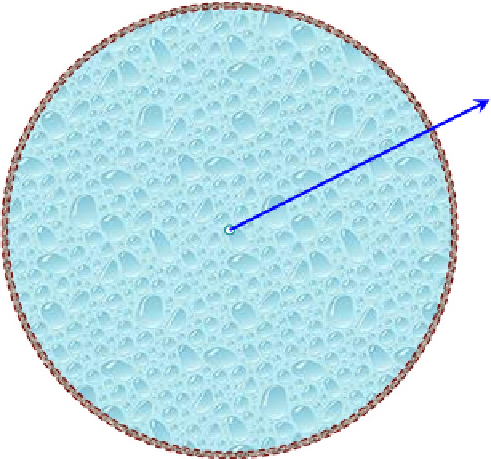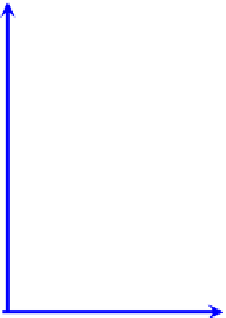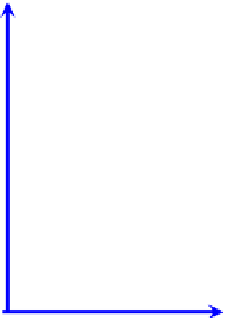Biomedical Engineering Reference
In-Depth Information
C
Ab
S
d
p
/2
= R
p
+
S
R
p
C
Ai
r
r
r
= 0
d
C
A
d
r
0
C
AS
C
A,0
= 0
r
= R
p
C
A
= C
AS
C
A
= C
Ai
r
=
d
p
/ 2
FIGURE 17.9
A schematic of diffusion and reaction in a spherical capsule.
For enzyme (or biocatalyst) loading, the situation can be more complicated. Enzyme
loading affects maximum rate
r
max
as well as the diffusivity inside the shell
D
eA
. Since
maximum reaction rate is proportional to the enzyme loading, higher biocatalyst loading
leads to higher maximum rate. Higher biocatalyst loading decreases the effective diffusivity.
Therefore, higher biocatalyst loading results in a higher Thiele modulus and lower effective-
ness factor. The Thiele modulus is defined by
"
#
2
Z
C
AS
¼
r
AS
a
f
2
ðr
A
ÞD
eA
d
C
A
(17.29)
C
Ae
;0
Thus, the changing of biocatalyst loading results in the change of Thiele modulus by
s
r
max
D
eA
ð
E
0
Þ
r
max
0
D
eA
ðEÞ
s
ED
eA
ð
E
0
Þ
E
0
D
eA
ðEÞ
f
¼
f
¼
f
(17.82)
0
0
where
E
0
is the biocatalyst loading initially, at which the Thiele modulus is
f
0
. When diffu-
sion is limiting at least after increasing the biocatalyst loading,
s
ED
eA
ðEÞ
E
0
D
eA
ðE
0
Þ
r
max
f
0
r
max
0
f
¼
h
ðr
Ai
Þ¼
h
0
ðr
Ai0
Þ
h
0
ðr
Ai0
Þ
(17.83)
























Search WWH ::

Custom Search